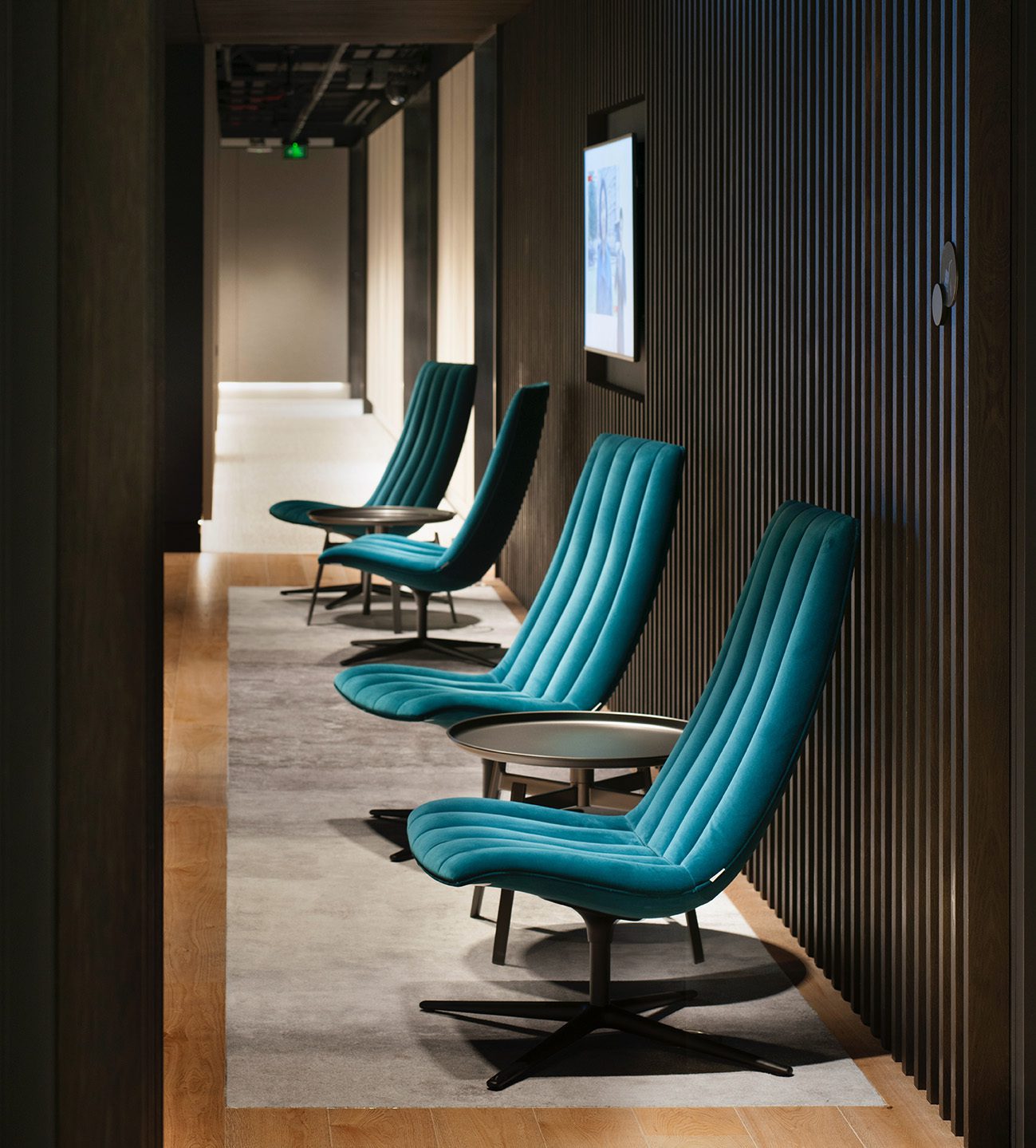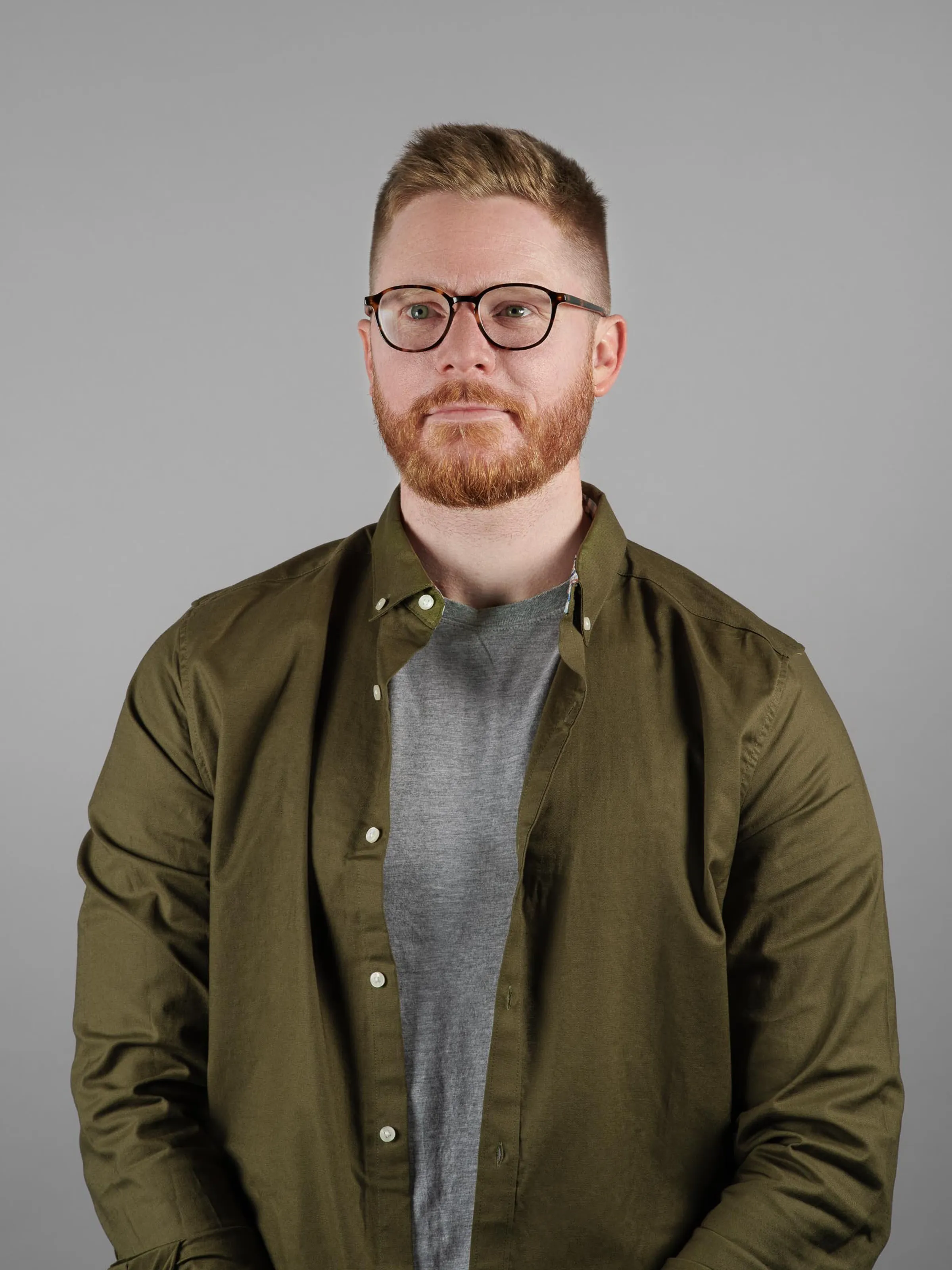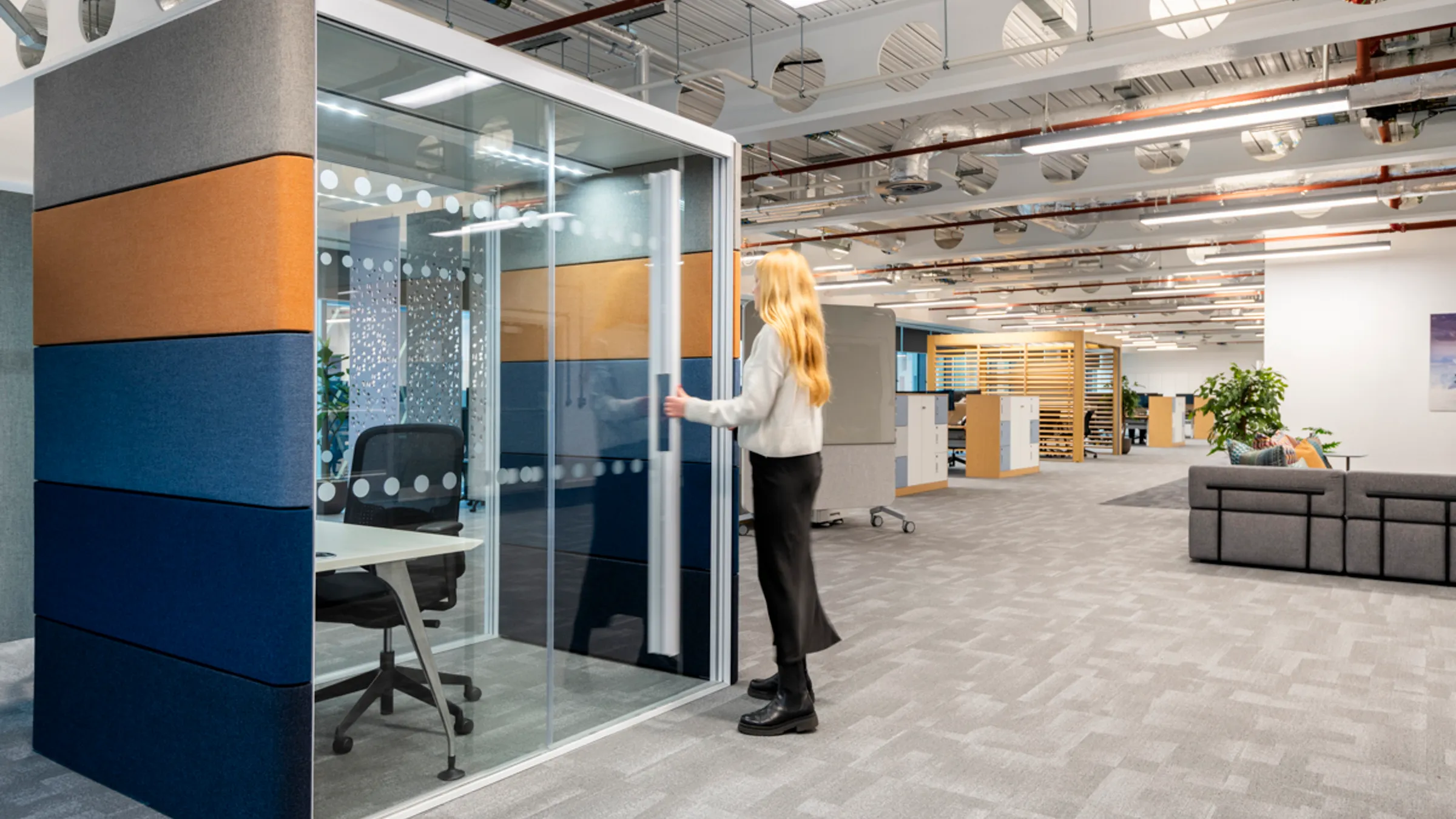The Next Generation of Furniture Designers
Spotlight on Emerging Talent: Aniela Goodenough
Sketch Studios is proud to launch its latest initiative, the Furniture Designer Spotlight, dedicated to championing new talent in the realm of furniture design.


Written by
Gareth van Zyl
Contents
Our 'Furniture Designer Spotlight' initiative shines a light on the creative minds of British designers, particularly those still navigating their academic journey or recently graduated. In this edition, we feature Aniela Goodenough, a recent graduate from Nottingham Trent University, who has already made significant strides in the design world.
Aniela's journey is a testament to the blend of heritage and innovation, as demonstrated by her standout creation, the Strata pendant lamp. Crafted from oak veneer, Strata is more than a lighting fixture; it is a tribute to the vanishing art of Sussex trug making, reimagined for contemporary settings. This lamp not only illuminates spaces but also highlights the importance of sustainable practices and traditional craftsmanship in modern design.
In her final year at university, Aniela worked with Sketch Studios as a Project Coordinator, where she honed her skills and developed a keen eye for practical and sustainable design solutions. Her work embodies a commitment to creating beautiful, functional, and environmentally responsible furniture.
In the following article, Aniela shares insights into her design philosophy, influences, and her vision for the future of furniture design. Her thoughtful responses offer a glimpse into the mind of a designer dedicated to innovation, sustainability, and the seamless integration of beauty and functionality into everyday life.
Where do you draw inspiration from for your designs?
Functionality is at the heart of my design philosophy. Instead of simply designing another chair, I strive to create practical and sustainable solutions for everyday products. By identifying gaps in the furniture market, I develop beautiful, accessible pieces that meet those needs. My main inspiration comes from pinpointing missing elements in the market, staying informed about current trends and colour schemes, and crafting pieces that are both aesthetically pleasing and functional. While I take cues from current trends and existing furniture designs, I also draw significant inspiration from nature. Its organic forms and shapes frequently find their way into my work, adding a touch of timeless elegance and a connection to the natural world
Which designers have been influential for you?
My passion for design was ignited at a young age, fuelled by a family friend who was an industrial designer. This "inventor," as I fondly called him, created fascinating objects and being noticed by George Clarke’s Amazing Spaces was truly inspirational. It fuelled my desire to enter the furniture and interior design industry. From the age of seven, I kept an "inventor's book" filled with sketches and ideas for new creations, no matter how crazy. This passion for envisioning ideas and then learning how to bring them to life was truly inspirational. Today, I draw inspiration from established designers like Tom Raffield and Marc Fish, whose innovative use of steam-bent wood and veneers pushes the boundaries of materiality.
What is your definition of furniture design?
In my eyes, furniture design transcends more than aesthetics. It involves crafting beautiful objects that seamlessly integrate into our daily lives, subtly elevating the ordinary into something special. However, this pursuit of new furniture design must be balanced with a deep respect for our environment.
Sustainable practices are not just a checkbox but a core principle. Furniture shouldn't only be visually pleasing; it should be produced with minimal environmental impact, leaving a lighter footprint on our planet. The world is already overflowing with furniture – from cheaply made, disposable pieces to high-end, sculptural ones coveted for their exclusivity. While design is inherently subjective, I believe we have a responsibility to move beyond the cycle of churning out furniture for the sake of novelty. Chasing trends and releasing new collections just for the sake of it often leads to clutter and waste. Instead, furniture should be a considered addition, designed with intention and built to last. It should enhance the spaces we inhabit, not contribute to the ever-growing mountain of discarded possessions.
How do you see furniture adapting to a more sustainable agenda?
Sustainability is not a choice; it’s a necessity. As a designer in one of the most resource-intensive industries, I emphasise the importance of conscious design choices throughout the entire process – from modelling and sketching to development and production. Using locally sourced materials and minimising transportation footprints are crucial aspects of sustainable furniture design. Educating consumers about the true cost of disposable furniture is a critical step. Many may not be aware of the environmental impact of fast furniture production, from deforestation and resource depletion to pollution and waste. By highlighting the lifecycle of furniture, the hidden costs associated with cheap materials and construction, and the benefits of investing in well-made, sustainable pieces, we can empower consumers to make informed choices. Shifting the conversation around furniture from fleeting trends to long-term value and environmental responsibility is essential for fostering a more mindful and sustainable future for the furniture industry.
What is your favourite material to work with and why?
There is something truly inspiring about wood. Its versatility opens up endless creative possibilities. Unlike materials that require long-distance transport, wood often boasts a more sustainable footprint. With a variety of species and a spectrum of stains and joinery techniques, it offers a playground for exploration. Every piece crafted allows me to showcase the inherent beauty of this natural material. Wood's adaptability is captivating; it can be transformed into affordable furniture sets using pine or sculpted into luxurious bespoke pieces with walnut or ebony. This versatility allows me to cater to diverse tastes and budgets. Perhaps the most captivating aspect is its ability to be steam bent. This process demands precision, but the resulting sculptural forms are a testament to wood's delicate yet enduring nature.
Do you have a particular process you follow when coming up with new designs?
My design journey always starts with a deep dive into research. Before I even pick up a pencil, I aim to uncover the problems people face with everyday furniture and products. This research obsession helps me understand the issues inside out. Once I grasp the challenge, I brainstorm solutions and translate them into initial sketches. However, the design process after this initial research is completely iterative. No two projects follow the same path. Each one reveals unique problems that require fresh solutions. This constant loop of exploration and refinement excites me – it's a learning adventure every time. Research is the foundation. By delving into the client, customer, brand identity, current trends, and unmet needs, I ensure I have all the right tools to design to the client’s needs.
Where do you see furniture design in the next 10 years?
Over the next ten years, I believe furniture design will undergo a significant transformation. As living spaces shrink due to urbanisation, adaptability and multi-functionality will become paramount. Sustainability will be a defining principle, with eco-friendly materials like recycled plastics and responsibly sourced wood taking centre stage. Technological advancements in 3D printing and digital fabrication could open doors for personalised furniture solutions, enabling self-assembly or custom-designed pieces.
Wellness will also play a key role in furniture design. Ergonomic chairs, standing desks, and items that promote movement will be in high demand. Furthermore, the integration of technology will extend beyond just functionality. The future might bring interactive furniture – coffee tables morphing into touchscreens for entertainment, or ottomans responding to voice commands to adjust lighting.
The future of furniture design will be a blend of comfort, adaptability, and cutting-edge technology, all with a focus on sustainability and well-being. It is an exciting time to witness how designers will translate these trends into innovative and beautiful pieces for our homes.

Aniela Goodenough

Product name: Strata
Product Spotlight
Product name: Strata
Materials used: Oak Veneer
Design process and inspiration behind the furniture piece:
Woven from heritage and sustainability, Strata is a pendant lamp that bridges traditional craftsmanship and modern design. Inspired by the fading artistry of Sussex trug making, this light reimagines the trug's essence for contemporary spaces.
Constructed entirely from sustainable veneer with metal accents, Strata embodies the practicality of a trug. Its name reflects the lamp's layered design, symbolising the evolution of the trug from a work tool to a cherished household item. The light's form echoes the trug's construction, with meticulously layered sustainable veneer wrapped around a central core, evoking the image of a Sussex trug overflowing with a bountiful harvest, reimagined as a basket overflowing with warm, inviting light.
Each layer of veneer is carefully bent and secured, reminiscent of the traditional binding technique used in trug making. This meticulous process results in a beautiful and sustainable piece that celebrates the craftsmanship of Sussex's trug makers. Strata is more than just a lamp; it's a conversation starter, a tribute to a fading tradition, and a testament to the enduring beauty of sustainable design.
Discover more about our Designer Spotlight initiative and anticipate upcoming features showcasing emerging designers who are shaping the future of furniture with their unique visions.
Published on
June 20, 2024












